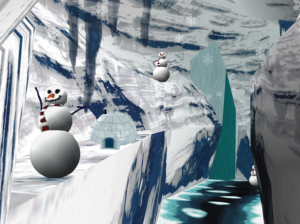The constant across all cultures is the factor of the human brain—a three-pound, equally introspective and innovative organ that has the capacity to interrogate its own existence. However, the rate of development across the world has been highly dependent on the geographic limitations of the region each society settles in—at it’s most basic, the growth of the polis is a culmination of luck and outside natural influences. The commonalities of both human nature and the stressors we have put on international community are more similar than dichomitized.
In Vilayanur Ramachandran’s Ted Talk (https://www.ted.com/talks/vs_ramachandran_the_neurons_that_shaped_civilization#t-442329), the neuroscientist describes how our brain functions and its relation to our development as a culture. The mirroring neurons, as Ramachandran calls them, respond the same when you perform an action as when you see someone perform the same action, indicating the brain adopts that someone’s point of view. This gives neurological basis for inheritance-based evolution, meaning we can actively choose how our species will evolve. The question that has been simmering in class of whether or not the Anthropocene should even be called that—do we deserve to have a potential apocalypse named after the species that caused it, or is that all too narcissistic? The brain fundamentally contains that answer—we control the outcome of our own destiny, and in a way so too do we influence that of our planetary system’s as she does ours.
The second neuron of interest Ramachandran speaks of is the “Gandhi Neurons,” the neurological confirmation to human empathy. As the neurologist describes, if we didn’t have skin and saw other people touching one another we would experience touch without being corporeally affected by it. At this point in his talk, Ramachandran mentions Eastern philosophies’ regard of one person’s pain as their own. In many more ways than just neurology, the West is integrating this information. In the technology field, virtual reality is being used for medicinal applications such as treatment for PTSD, phobias, anxiety, depression, and burn patients. Most interesting to me is work being done with burn-victim patients, burn injuries perhaps the most painful in profession. Researchers at the UW created SnowWorld, a virtual world that helps patients disassociate from pain while going through wound care, one of the many ways technology is improving the world everyday. There is still hope yet for the anthropocene.

“Virtual Reality Pain Reduction.” Vrpain.com, HUMAN PHOTONICS LABORATORY University of Washington, www.vrpain.com/.
